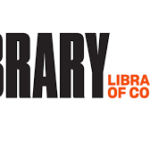Surili Sheth – Understanding Slum Dwellers: Part 1 – “Slum Dweller”
No comments yetahigloval.wordpress.com. March, 2013 – I use the term “slum dweller” as a descriptive phrase – and I choose to use it because it is how people living in slums refer to themselves, it describes the place they live (which is the subject of this post), and it acknowledges the existence of the type of informal settlement that a billion people in the world live in today – slums.
Slum policy
In developing an understanding of slum development policy, institutions have often failed to take services, environment, and community, and how these are linked to the physical structures and productivity of the people living in the slum, into consideration.
There are three major, interconnected aspects to slums that policymakers are generally concerned about:
1) The unused or underutilized economic worth – market/productive capacity – of the people living in the slum.
2) What part the slum (both the physical infrastructure and the people within it) plays in the larger context of the city, state, or country.
3) The deprivations and poverty the people living in a slum face.
Often, the connections between these three aspects go unrecognized and they are treated as separate issues in policies that attempt to address the informal settlements. I argue that a true inclusive development policymaker must possess an adequate understanding of all three, using India as an example.
Read more: http://ahiglobal.wordpress.com/understanding-slum-dwellers-part-1-slum-dweller/
See also:
http://ahiglobal.wordpress.com/understanding-slum-dwellers-part-2-observations-of-an-indian-slum/
http://ahiglobal.wordpress.com/understanding-slum-dwellers-part-3-capabilities-and-informality/
http://ahiglobal.wordpress.com/understanding-slum-dwellers-part-4-some-promising-models/
You May Also Like
Comments
Leave a Reply





